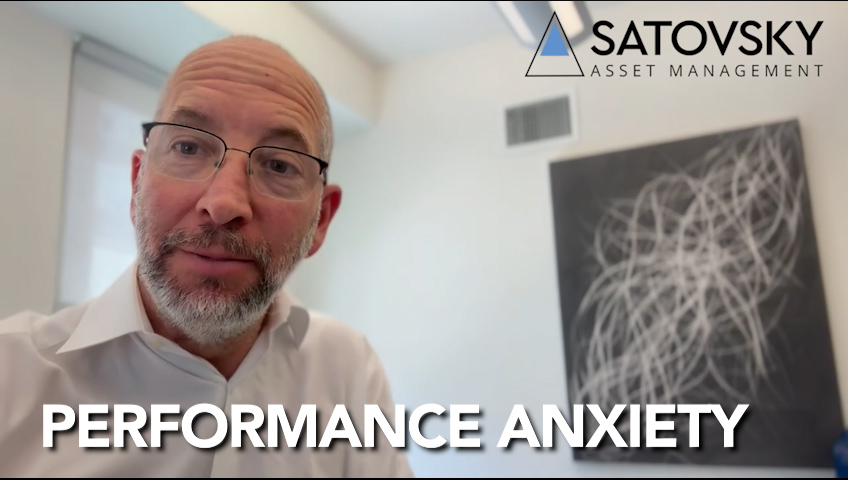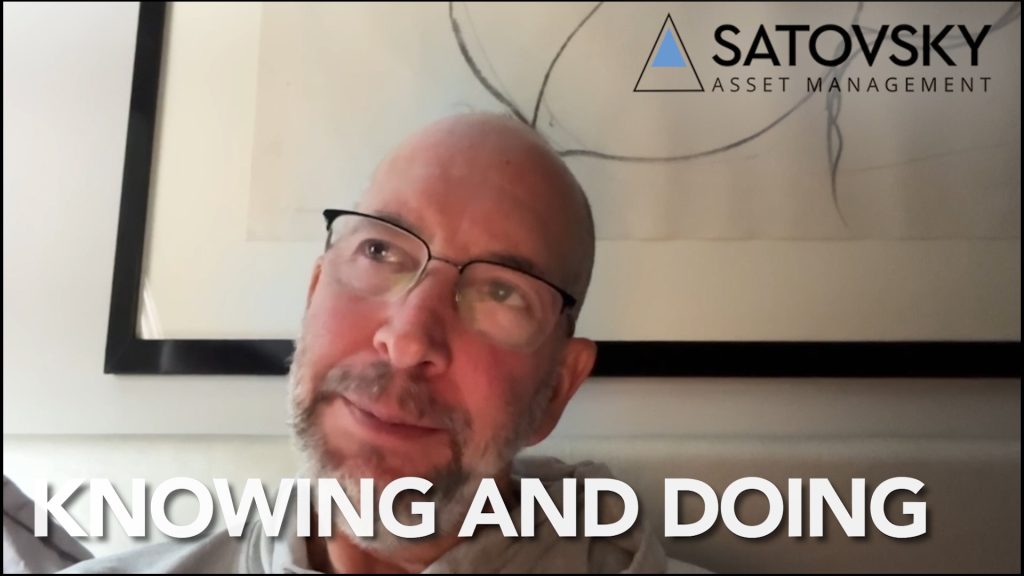This article addresses the uncertainty surrounding life insurance by exploring the different types of life insurance policies available, the different uses for those policies, how to assess the proper amount of coverage you should have, and what type might be best for you based on your goals.
Life insurance is a conversation avoided by many people and often for good reason: the various options are complex and sometimes too complicated to understand, the sales experience is usually viewed as unpleasant, and talking about you and your loved ones’ demise is an unsettling topic. After getting past all of that, you’re also adding another expense to your cash flow.
Unfortunately, for all those reasons, life insurance is something people may not get around to buying but wish they had after it’s too late.
The statistics support this: Despite the United States being the largest life insurance market in the world, only about 55% of Americans have life insurance. Of those, merely half have the proper amount of coverage.
There are several reasons why it’s important to address the life insurance conversation sooner rather than later. As mentioned above, your life insurance plan can’t be fixed or altered after the fact (i.e., after someone passes away). Further, life insurance gets more costly as you age, so if expense is a concern, it’s better to put insurance in place now versus later. Finally, possible changes in health as you age can make you ineligible to secure coverage.
In this article, we hope to clear up the uncertainty surrounding life insurance to better equip you to put a life insurance plan in place. We will explore the different types of life insurance policies available, the different uses for those policies, how to assess the proper amount of coverage you should have, and what type might be best for you based on your goals.
Types of Life Insurance
The concept of life insurance seems straightforward: you pay your annual premium and when you pass away, your beneficiaries receive the death benefit. However, because of the many different types of life insurance policies available, it can be confusing to understand exactly what you are paying for.
Most broadly speaking, there are two types of policies: term and permanent.
Term Insurance
Term insurance is simply a death benefit in exchange for a premium. Generally, the death benefit stays level (i.e., unchanged), and the premium is guaranteed for a certain time period (ex. 1 to 30 years), or until a certain age. It’s a “use it or lose it” type policy in a similar respect to homeowner’s insurance or auto insurance.
It’s also by far the most common type of policy sold, with about 70% of new policies purchased being term insurance. It also tends to be much less expensive than permanent insurance because of its “use it or lose it” characteristic. In fact, over half of Americans think the cost of a term life insurance policy is 3 times greater than its actual cost. You are essentially paying for the likelihood that you will pass away in any given year or over a specific time period.
Permanent Insurance
Permanent insurance, like term insurance, sounds simple; it’s an insurance policy you can’t outlive as long as you pay the premiums (i.e., it’s permanent in nature). However, that is where the simplicity stops, as a permanent insurance policy comes in many different flavors.
The oldest form of permanent insurance is Whole Life Insurance. It provides a guaranteed level premium, death benefit, and policy value. The policy is typically designed so the policy value, or cash value, grows to match the death benefit at age 100. As a result, it’s considered very low risk (and low reward) because you are guaranteed to get out of the policy, in the form of the death benefit, at least what you put into the policy, in the form of premiums. Because of the low-risk nature, the guarantees built into the policy contract, and the fact that the insurance company knows with certainty that they’ll be paying out the death benefit at some point, it tends to be a very expensive form of insurance.
Another form of permanent insurance is Universal Life Insurance. It’s much more flexible than Whole Life Insurance as it offers flexible premiums and flexible death benefit options. Universal Life policies usually focus on providing a guaranteed death benefit or accumulating cash value. There are many different types of Universal Life Insurance:
Fixed Universal Life Insurance:
Your policy value grows over time based on a guaranteed crediting rate (i.e., a guaranteed percentage of interest that will be paid annually). It’s less risky than some types of Universal Life policies, but because of the guaranteed credit rate, it offers less growth potential.
Indexed Universal Life Insurance:
Your policy value crediting rate is tied to a stock market index or indexes over a period of time. Since you participate in the ups and downs of the index, it is considered riskier than a fixed type policy, but your policy value has higher potential for growth.
Variable Universal Life Insurance:
Your policy value is directed to an investment sub-account where you select from a lineup of investment options. These policies are performance-based and can outperform or underperform Whole Life or other Universal Life policies. The risk is passed on to the policy holder as poor performance can cause the policy to lapse unless more premiums are paid. On the other hand, good performance keeps the policy in force and the policy value will grow.
Along with the many different types of policies available, the way the policies can be designed through various riders, ownership structure, etc., can be very different, so it is important to consider all aspects of a policy when reviewing your current coverage or purchasing a new policy.
Now that you know how complex and complicated life insurance can be:
How do you decide whether you need life insurance, and if so, how much and what type?
Well, as you hear quite often from your advisory team at Satovsky, the most common answer in finance is “it depends”. It depends on your personal goals, your household’s spend rate, and many other factors.
As a general guide, however, let us assess each question separately:
Two of the most common reasons you would need life insurance are (1) to provide financial reassurance for your loved ones should you pass away and (2) as a wealth transfer technique.
Consider you are the breadwinner for your family. Would the peace of mind of knowing your family was financially secure in the event you passed away unexpectedly outweigh the cost of insurance? Even in the case of a nonworking spouse, what would the cost be to replace all of the roles and responsibilities of that spouse? If one of your goals is to protect your family’s long term financial future, even if you are not around, then this would be a reason to have life insurance.
Additionally, you may want to protect your financial legacy. Perhaps one of your goals is to guarantee an inheritance for your children or bequest to your favorite charity, but also want the flexibility to freely spend your assets during retirement. Or maybe you own a business or have a high concentration of illiquid assets, like real estate. Insurance can provide liquidity for your estate for operating costs or estate taxes instead of your beneficiaries having to be a forced seller of those assets.
Now that you have determined you may need life insurance, the next question is:
How much life insurance do you need?
If you are looking to ensure your family’s financial security, how much life insurance you need will be a factor of how much your household spends and how much you have already saved. If your household spends $90,000 a year at a 3% sustainable spend rate, your family would need $3,000,000 in investable assets to fund their annual spending. If you’ve already saved $1,000,000 in investable assets, then you would need $2,000,000 of life insurance to make up the shortfall.
There may be other things to consider, like one-time larger expenses you expect to pay in the future that aren’t factored into your current spending (i.e., college tuition) that might increase the amount of life insurance you need. Or perhaps your surviving spouse will continue to work which can reduce the amount of investable assets needed to make up the shortfall in household spending.
If you are purchasing life insurance for wealth transfer, that may be more straight forward. Using the example above, if you want to guarantee a certain inheritance, then you can purchase an insurance policy with that exact death benefit. Or if you are providing liquidity for your estate, you can estimate your estate tax liability and purchase a policy with a death benefit matching that amount.
The final question now is:
What type of life insurance policy should you purchase?
Generally speaking, if you are looking for income replacement, then term life insurance is usually your best option. It’s generally inexpensive, as I noted above, and can be “laddered” to further reduce your average cost and reduce the premium over time.
The idea of “laddering” your term life insurance means buying multiple term insurance policies with different expiration dates. Those expiration dates can coincide with big financial events like when your kids finish college, or your mortgage being paid off. Also, as I stated above, one factor of how much insurance you need is how much you have already saved. As you save more, you will need less insurance assuming your spending has stayed the same, so you can project how your investable assets will grow overtime and “ladder” your insurance accordingly.
Finally, since you are essentially ensuring your lost wages if you pass, you may not need permanent insurance that lasts for your entire lifetime, but only until retirement. You can purchase term insurance that would match your projected retirement date to offset the continued expense of life insurance throughout retirement.
If your goal is wealth transfer however, then a permanent insurance policy would better serve your goal. Remember, term insurance only lasts for a specific number of years, or until a certain age, but permanent insurance has the optionality to last your entire life. There are many types of permanent insurance so the specific type will be dependent on your goals (cash accumulation versus death benefit growth), your risk tolerance (Variable Universal life insurance is market dependent while Whole Life is guaranteed if you make the premium payments), and how much you want to spend on insurance premiums (Whole Life insurance tends to be more expensive than Universal Life insurance).
Key Takeaways
Life insurance is often overlooked and avoided because of its complexity and the uncomfortable nature of the conversation. However, a bit of prior knowledge can give you the confidence to put the proper life insurance plan in place for you and your family. To help lighten the mood and leave you with something heartwarming, I’ll share my favorite life insurance statistic:
While most Americans use life insurance to protect their spouse or children, the third most common beneficiary of life insurance is a person’s pet! That’s right. More Americans are looking to leave a legacy to Fido, Loofah and Buddy instead of to their grandchildren, parents, siblings or friends.
With that said, before making any decision on life insurance, please consult your SAM advisory team to help you align your life insurance plan with your overall financial goals. It is important to take a holistic approach to determining the best strategy for you and your family.
At SAM our dedicated team of professionals consider it our fiduciary duty to provide clients with the highest standard of care and service in the advisory world. To learn more about how we may help you, get in touch with a SAM advisor today.




